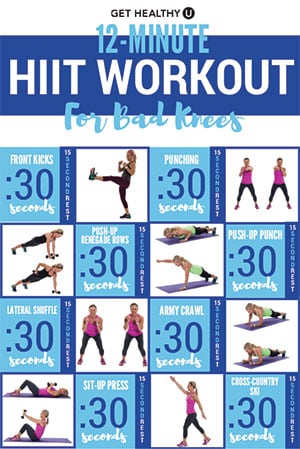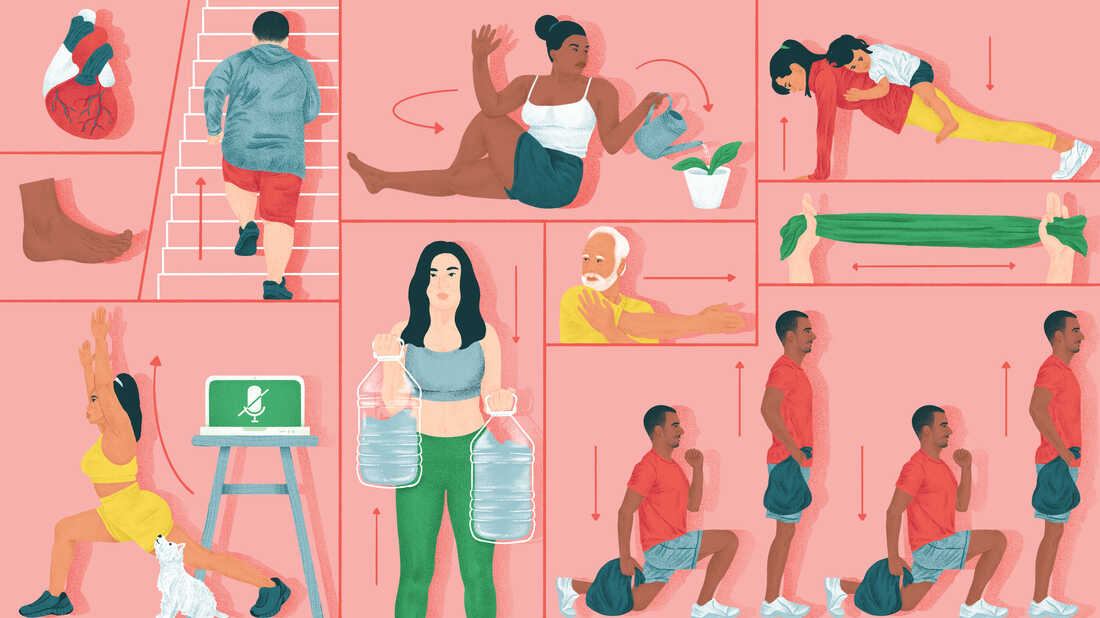
It is possible to work out in the winter but there are some benefits. But it can be hard for you to stay motivated. The cold weather can bring down motivation and make it difficult to exercise. We might make excuses for being stuck on the couch or in bed all day, but it's time to put aside the excuses and get moving. Here are some great tips to keep you motivated during the cold months. These are great tips to stay motivated in cold weather: Get outside in the morning, take a walk in afternoon, and get out the door at least once a day.
It is important to warm up before you start a workout. In cold weather, muscles will become stiffer and less flexible, increasing the likelihood of injury. You can prepare your muscles to take on a more intense workout by increasing your warm-up time. Also, warmer workouts will prepare you for more intense training. You should also cool down after a winter workout.

However, cold weather is not your only problem when it comes to getting a good workout. There are fun activities that can be done when temperatures drop. These exercises will make it more bearable and help you burn calories. Your gym is a great place to exercise during winter's shorter days. Also, colder weather can make it less likely that you will get sick. This article will provide some helpful tips on how to exercise in the winter.
While winter can be hard, it can also prove dangerous. There are many things you can do in order to stay warm and avoid being caught out by the cold. It is important to wear proper clothing. Gloves and a torch are essential. To stay warm, you should layer up. You won't be able to exercise if you don’t have appropriate clothing. If you're based in the UK, you might consider purchasing a waterproof jacket and windproof jacket.
The body's endorphins are also increased in winter. These neurotransmitters, which are released during exercise, can help you feel happier. You will need lots of water and layers to keep warm and hydrate your muscles. Make sure you drink lots of water. You can even work out while watching TV. This can make it more fun and productive.

It's also easier to stay hydrated during winter, which is another reason to exercise in winter. The cold can make it difficult for you to get out of bed and begin exercising. But, it's possible. You just need to make sure you are drinking plenty of water. Water is essential for a good workout. A sports drink is recommended for activities that take more than 90 minutes. This will keep your body hydrated without causing dehydration.
FAQ
What does it take to make an antibiotic work?
Antibiotics are drugs that destroy harmful bacteria. Antibiotics are used for treating bacterial infections. There are many options for antibiotics. Some can be taken orally, others are injected and some are applied topically.
People who have been exposed may be prescribed antibiotics. An oral antibiotic might be prescribed to someone who has been exposed to chicken pox. This will prevent the spread of shingles. An injection of penicillin may be necessary to prevent pneumonia if someone has strep.
If antibiotics are to be administered to children, they must be prescribed by a doctor. Children are at greater risk of developing side effects from antibiotics than adults.
Diarrhea being the most common side effect of antibiotics. Side effects of antibiotics include diarrhea, stomach cramps and nausea. These symptoms usually go away after treatment ends.
What can you do to boost your immune system?
The human body is composed of trillions if not billions of cells. Each cell is responsible for creating organs and tissues with specific functions. A cell that dies will be replaced by another. The chemical signals known as hormones are used to communicate between cells. Hormones control all bodily functions, including growth, development, metabolism, immunity and immune system.
Hormones, chemicals that are secreted throughout the body by glands, are chemicals. They travel through bloodstreams and act as messengers that control the function of our bodies. Some hormones are made internally, while others are created outside the body.
The release of hormones from a hormone producing gland into the bloodstream is the beginning of hormone production. Once hormones have been released, they travel through the body until reaching their target organ. Some hormones are only active for a brief time. Some hormones remain active for longer periods of time and can continue to have an impact on the body's function long after they are gone.
Some hormones are produced in large quantities. Others are only produced in very small quantities.
Some hormones are made at certain times in our lives. For instance, estrogen is produced during puberty, pregnancy, menopause, and old age. Estrogen helps women develop breasts, maintain bone density, and prevent osteoporosis. It also promotes hair growth and keeps skin smooth and soft.
What is the best diet for me?
There are many factors that influence the best diet, including your gender, age, weight, health condition, lifestyle, and personal preferences. It is also important to think about how much energy you use during exercise and whether you like low-calorie foods.
If you are trying to lose weight, then you may want to try intermittent fasting. Intermittent fasting involves consuming only specific meals throughout the day, rather than having three large meals. You may find that this method works better for you than traditional diets that include daily calorie counts.
Studies have shown that intermittent fasting can improve insulin sensitivity and decrease inflammation. This could lead to improved blood sugar levels, and a lower risk of developing diabetes. Other research suggests that intermittent fasting may promote fat loss and improve overall body composition.
What is the difference between a virus and a bacterium?
A virus is a microscopic organism that cannot reproduce outside its host cell. A bacterium (or single-celled organism) reproduces by splitting itself into two. Viruses measure only 20 nanometers in diameter, but bacteria is up to 1 millimeter in size.
Viruses spread easily through contact with infected bodily tissues, such as saliva and urine, semen, vaginal secretions or pus. Bacteria can easily be spread from direct contact to contaminated surfaces and objects.
Viral infections can also be introduced to our bodies by a variety of cuts, scrapes or bites. They may also get into the body through the nose and mouth, eyes, ears or rectum.
Bacteria can be introduced to our bodies by cuts, scrapes or burns. They can also be introduced to our bodies by food, water and soil.
Both bacteria as well as viruses can cause illness. But viruses do not have the ability to multiply within their hosts. So they only cause illnesses when they infect living cells.
Bacteria can spread within the host and cause illness. They can even invade other parts of the body. We need antibiotics to get rid of them.
Statistics
- WHO recommends consuming less than 5% of total energy intake for additional health benefits. (who.int)
- In both adults and children, the intake of free sugars should be reduced to less than 10% of total energy intake. (who.int)
- This article received 11 testimonials and 86% of readers who voted found it helpful, earning it our reader-approved status. (wikihow.com)
- nutrients.[17]X Research sourceWhole grains to try include: 100% whole wheat pasta and bread, brown rice, whole grain oats, farro, millet, quinoa, and barley. (wikihow.com)
External Links
How To
What does the meaning of "vitamin?"
Vitamins are organic compounds naturally found in food. Vitamins allow us to absorb nutrients from food. Vitamins are not made by the body, so they must be obtained through food.
There are two types if vitamins: water soluble, and fat soluble. Water-soluble vitamins dissolve in water easily. Some examples include vitamin C,B1 and B2 vitamins (thiamine), B2 and riboflavin, B3 and B6 vitamins (niacin), folic acids, biotin, pantothenic acids, and cholesterol. The liver and fat soluble vitamins are stored within the liver and in fatty tissue. You can find vitamin D, E K, A, beta carotene, and other fat-soluble vitamins.
Vitamins are classified according their biological activity. There are eight major vitamin groups:
-
A - Vital for normal growth and maintaining good health.
-
C - important for proper nerve function and energy production.
-
D - necessary for healthy bones and teeth.
-
E is necessary for good vision, reproduction.
-
K - essential for healthy muscles, nerves, and bones.
-
P - vital for building strong bones andteeth.
-
Q - Aids digestion and iron absorption
-
R - Red blood cells are made from red blood cells.
The recommended daily intake (RDA), of vitamins varies with age, gender and physical condition. The U.S. Food and Drug Administration has established the RDA values.
For adults over 19, the RDA for vitaminA is 400 micrograms per daily. For fetal development, pregnant women need 600 mg per day. Children ages 1-8 require 900 micrograms per day. Infants under one year of age require 700 micrograms per day, but this amount decreases to 500 micrograms per day between 9 months and 12 months of age.
Children ages 1-18years who are obese need 800 micrograms per day while those who are overweight need 1000 micrograms per day and children who are underweight need 1200 micrograms per day to meet their nutritional needs.
Children ages 4-8 years who have been diagnosed with anemia need 2200 micrograms per day of vitamin C.
2000 micrograms is the minimum daily intake for adults over 50 years old to maintain good health. Due to their increased nutrient needs, pregnant and breastfeeding women need 3000 micrograms daily.
Adults over 70 require 1500 micrograms each day, since they lose around 10% of their muscle mass every decade.
Women who have been pregnant or are lactating require more than the RDA. Pregnant mothers need 4000 micrograms per daily during pregnancy and 2500 after giving birth. Breastfeeding mothers need 5000 mg per day when breastmilk is being produced.